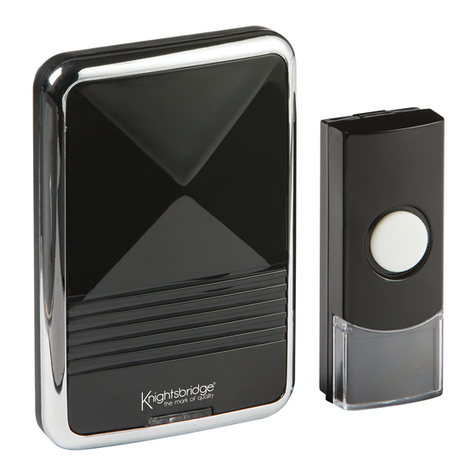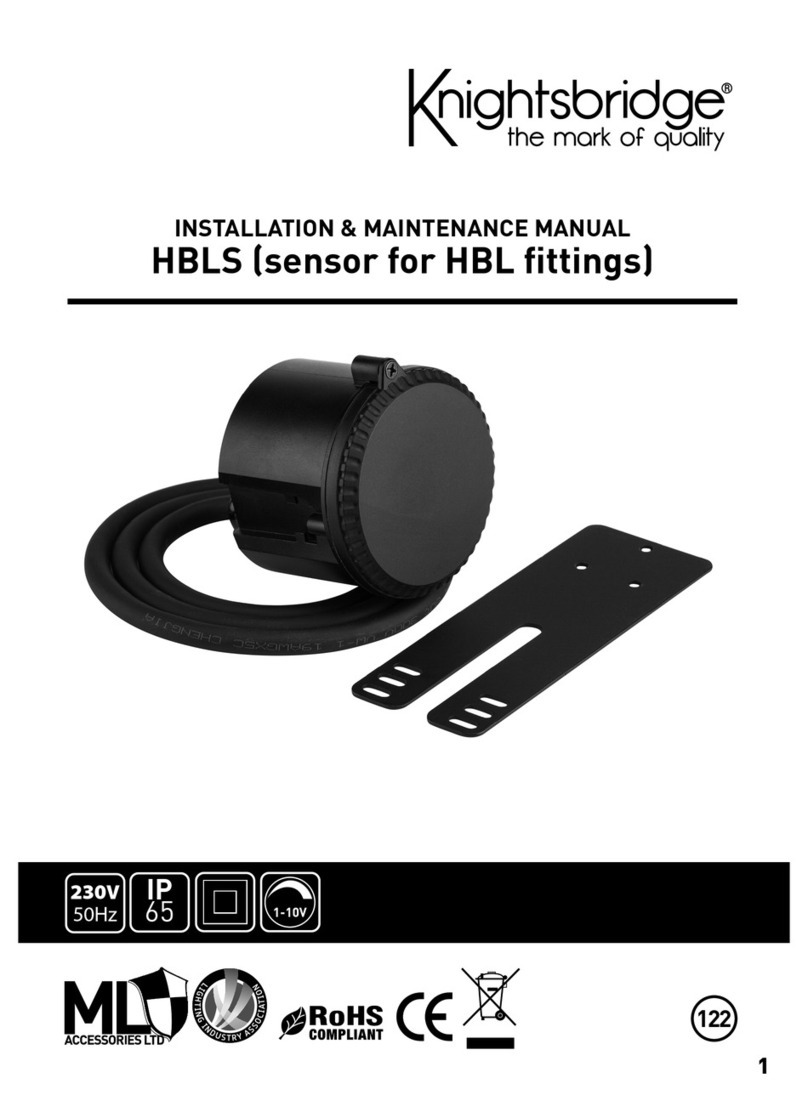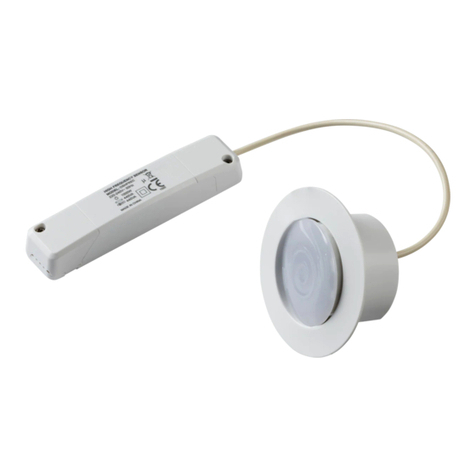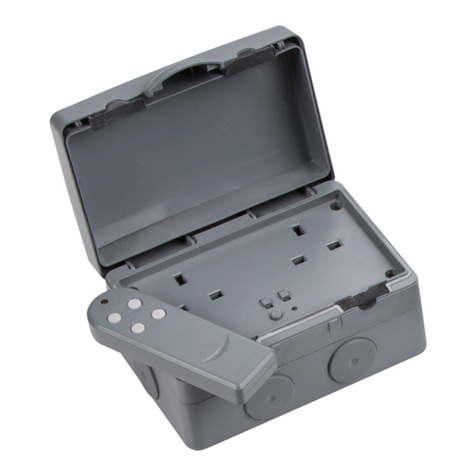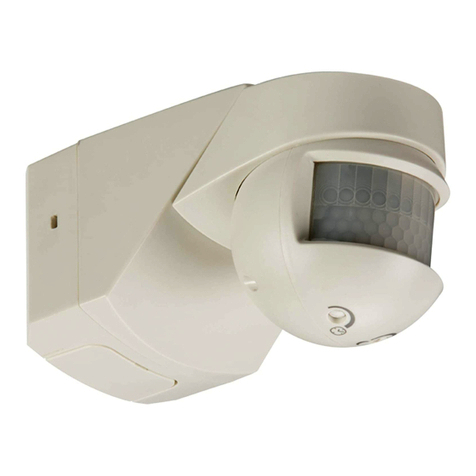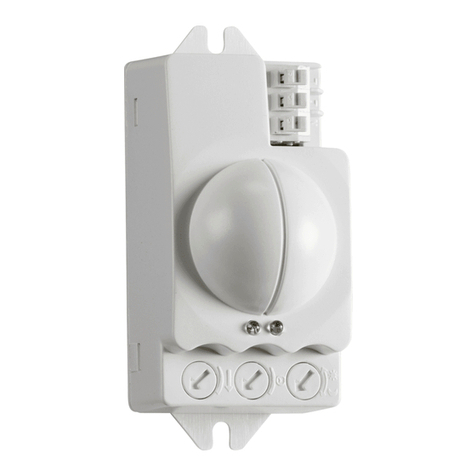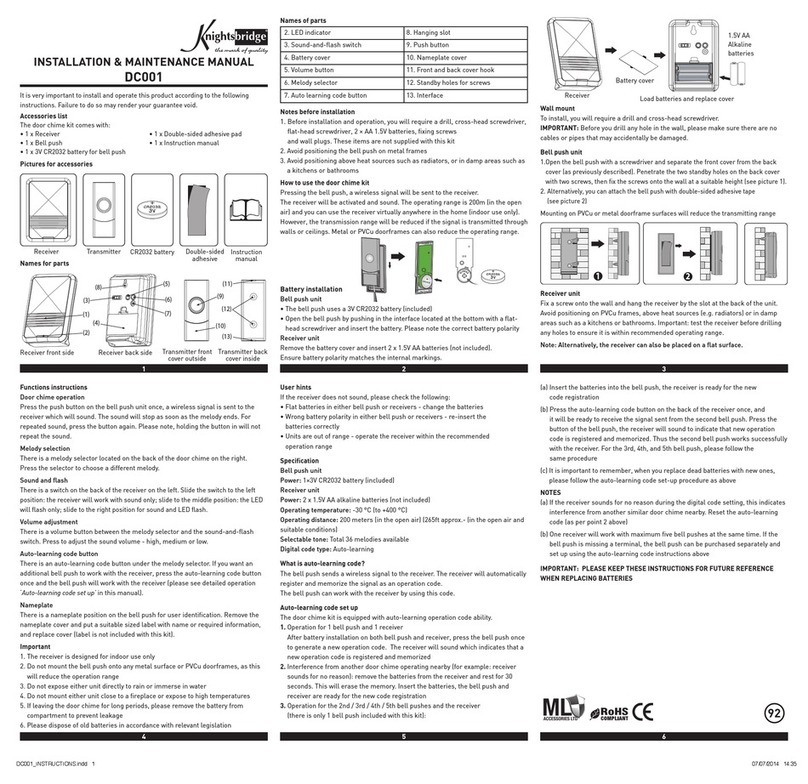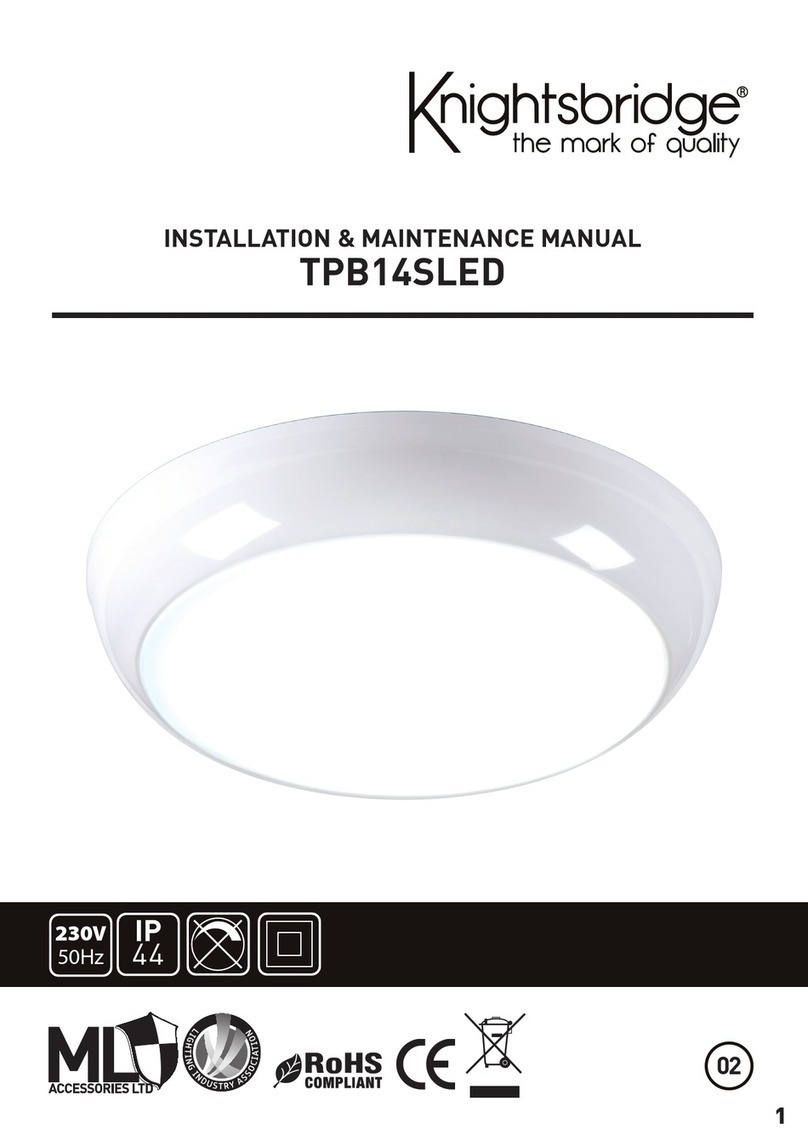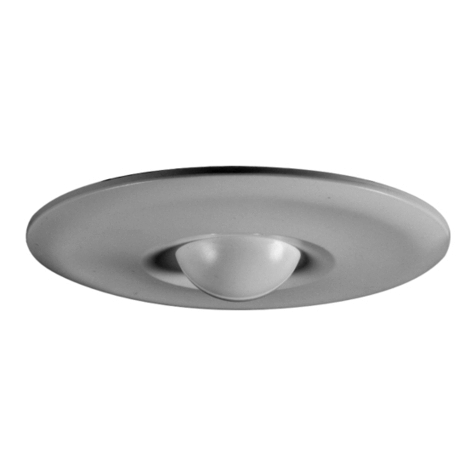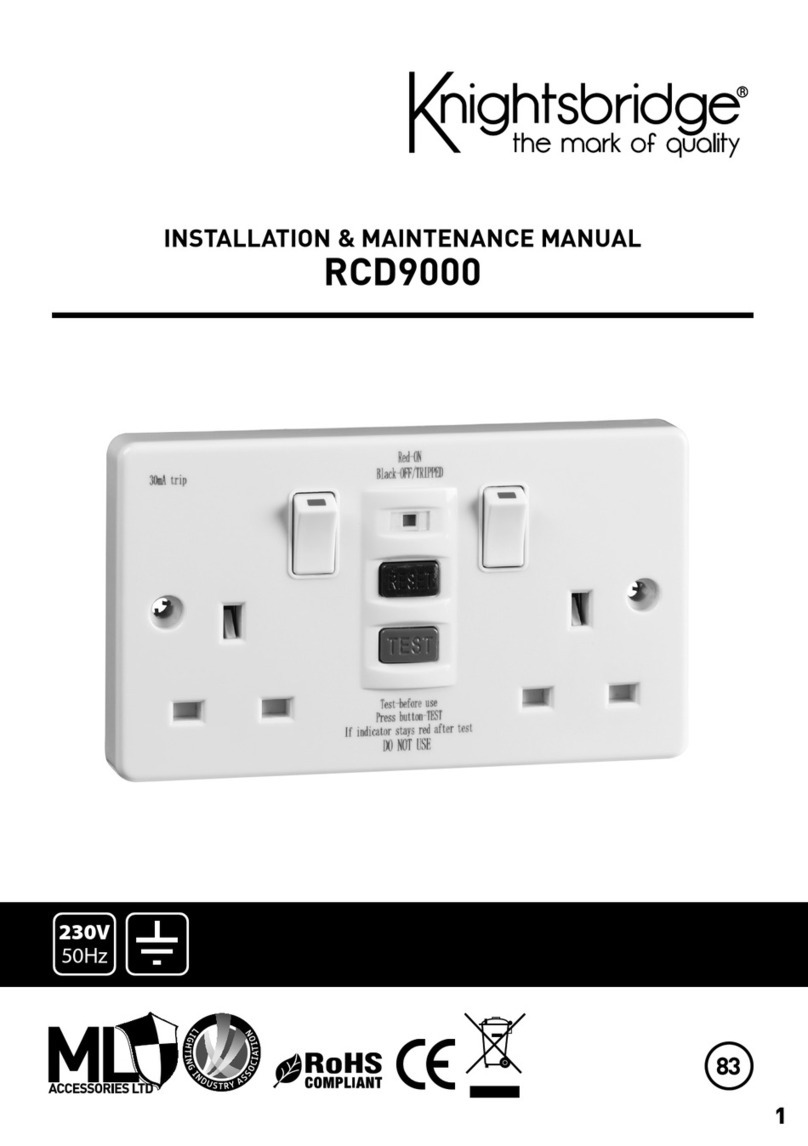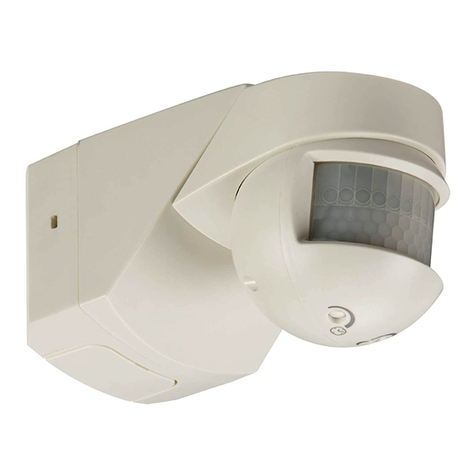
3
Battery installation
• Each bell push uses a CR2032 battery (included)
• Remove the nameplate cover. Remove the small rubber screw cover in lower right-hand corner with
thin-tipped tweezers or a needle, and unscrew the retaining screw (see Fig. 1)
• Insert a flat-head screwdriver into the slot on the bottom of the bell push and gently turn to open the front
cover
• Install the CR2032 battery ensuring the polarity is correct (+ side up) and replace front cover
• Replace the retaining screw, rubber cover, and the nameplate cover
INSTALLATION
Notes before installation
•If not using the double-sided adhesive pad, fixing screws and wall plugs will be required (not
included)
•Avoid positioning the bell push on metal door frames as this may affect the signal
•Avoid positioning above or near heat sources such as radiators, or in damp areas such as
kitchens and bathrooms
•Please note the IP (Ingress Protection) rating of the bell push when deciding the location for
installation
•The bell push is IP44 rated
User hints – If the receiver does not sound, please check the following:
•Flat batteries in either of the bell pushes –change the batteries
•Wrong battery polarity in either bell push –re-insert batteries correctly
•Units are out of range –operate the receiver within the recommended operation range
•If receiver is getting interference, take the battery out of the bell push, unplug receiver, wait for
10 seconds then replace the battery. Repeat procedure to generate new auto-learning code
Battery installation
•Each bell push uses a CR2032 battery (included)
•Remove the nameplate cover. Remove the small rubber screw cover in lower right-hand corner
with thin-tipped tweezers or a needle, and unscrew the retaining screw (see Fig. 1)
•Insert a flat-head screwdriver into the slot on the bottom of the bell push and gently turn to
open the front cover
•Install the CR2032 battery ensuring the polarity is correct (+ side up) and replace front cover
•Replace the retaining screw, rubber cover, and the nameplate
Mounting Bell Push
Note: before drilling into any wall or surface, ensure there are no cables or pipes that could
be accidentally damaged
User hints – If the receiver does not sound, please check the following:
• Flat batteries in either of the bell pushes – change the batteries
• Wrong battery polarity in either bell push – re-insert batteries correctly
• Units are out of range – operate the receiver within the recommended operation range
• If receiver is getting interference, take the battery out of the bell push, unplug receiver, wait for 10 seconds
then replace the battery. Repeat procedure to generate new auto-learning code
Mounting Bell Push
Note: before drilling into any wall or surface, ensure there are no cables or pipes that could be accidentally
damaged
• When using screws to attach to a surface, open the bell push as instructed in Fig. 1, pierce the fixing holes
on the rear of the bell push, mark locations and drill the holes
• Screw the backplate to the surface and replace cover
• To attach using the double-sided adhesive pad, ensure surface is clean and dry
• Peel back one side of the pad and attach to the bell push. Peel back the rear of the pad and attach to the
desired surface (see Fig. 2)
•When using screws to attach to a surface, open the bell push as instructed in Fig. 1, pierce
the fixing holes on the rear of the bell push, and mark locations for drilling
•Screw the backplate to the surface and replace cover
•To attach using the double-sided adhesive pad, ensure surface is clean and dry
•Peel back one side of the pad and attach to the bell push. Peel back the rear of the pad and
attach to the desired surface (see Fig. 2)
Fig. 2
Receiver Unit Installation
Plug the receiver unit into a socket outlet. Please ensure when you test the receiver it is within the
recommended operating range of the 2 bell pushes.
Auto-learning code set up
•After battery installation, press the bell push once on the first bell push to generate a new
operation code and hold the melody button on the receiver for 3 seconds. The receiver will
sound which indicates that a new operation code is registered and memorized. You can then
assign a melody to this bell push by pressing the melody selection button positioned on the
•When using screws to attach to a surface, open the bell push as instructed in Fig. 1, pierce
the fixing holes on the rear of the bell push, and mark locations for drilling
•Screw the backplate to the surface and replace cover
•To attach using the double-sided adhesive pad, ensure surface is clean and dry
•Peel back one side of the pad and attach to the bell push. Peel back the rear of the pad and
attach to the desired surface (see Fig. 2)
Fig. 2
Receiver Unit Installation
Plug the receiver unit into a socket outlet. Please ensure when you test the receiver it is within the
recommended operating range of the 2 bell pushes.
Auto-learning code set up
•After battery installation, press the bell push once on the first bell push to generate a new
operation code and hold the melody button on the receiver for 3 seconds. The receiver will
sound which indicates that a new operation code is registered and memorized. You can then
assign a melody to this bell push by pressing the melody selection button positioned on the
Receiver Unit Installation
Plug the receiver unit into a socket outlet. Please ensure when you test the receiver it is within the
recommended operating range of the 2 bell pushes.
Fig. 2
Fig. 1
